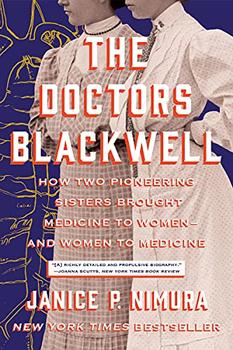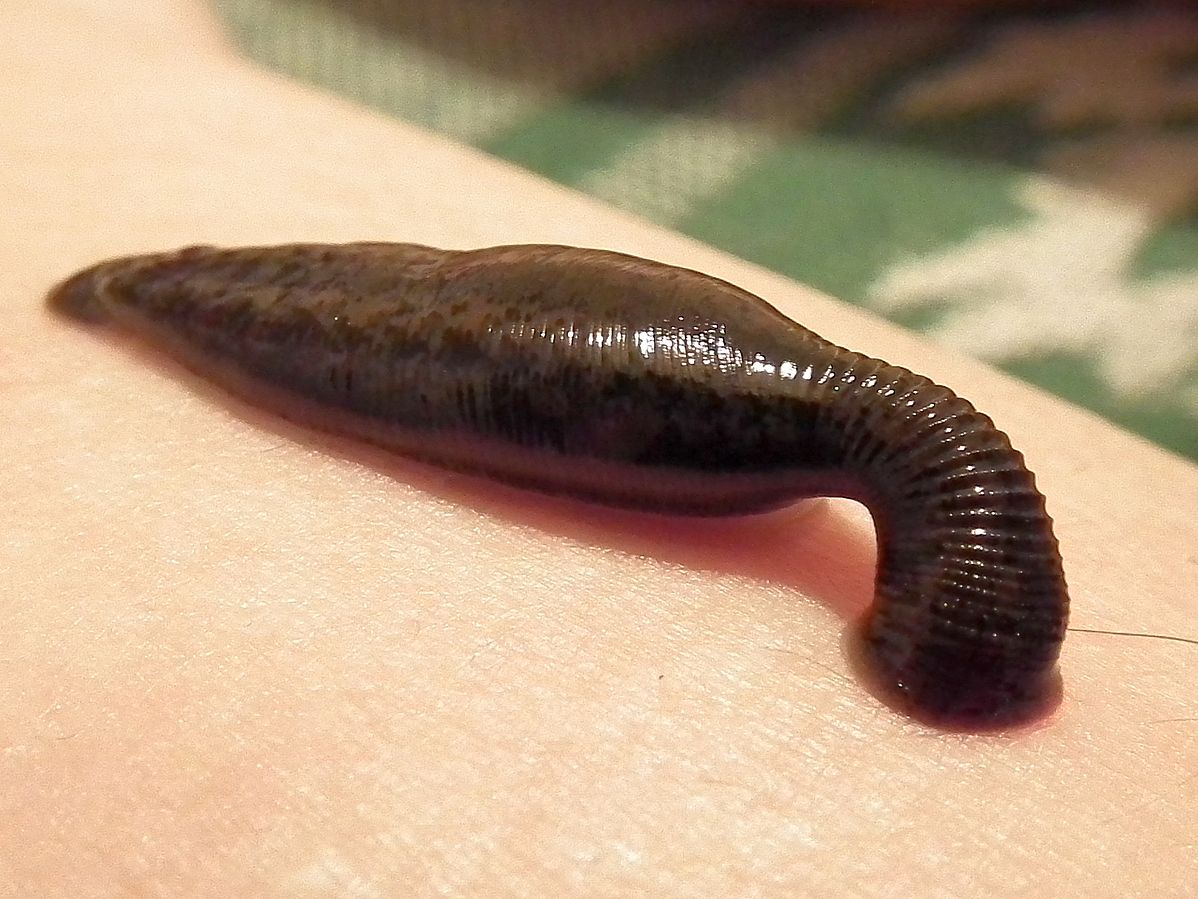Summary | Excerpt | Reading Guide | Reviews | Beyond the Book | Read-Alikes | Genres & Themes | Author Bio

How Two Pioneering Sisters Brought Medicine to Women and Women to Medicine
by Janice P. NimuraThis article relates to The Doctors Blackwell
The Doctors Blackwell, Janice P. Nimura's biography of Elizabeth and Emily Blackwell, explores the tools 19th-century physicians used to address their patients' needs. Many common ailments were believed to be caused by an excess of blood, and consequently removing some of a person's blood was thought to be efficacious; often doctors employed leeches for this purpose.
Most people have a passing familiarity with the leech — a slimy little invertebrate that attaches itself to a living body and obtains nourishment by sucking its host's blood. The leech is actually considered a segmented worm, and there are over 650 different species of them, living both on land and in water. On average, they range in size from under half an inch to 8 inches long, though the giant Amazon leech grows up to 18" in length. Their most notable characteristics are their suckers, a small one at the mouth-end and a larger one toward the posterior. A few species subsist on plant matter but the majority of leeches are parasitic and consume blood. They use sharp teeth to attach to their host's skin, but since the leech's saliva contains an anesthetic and an anticoagulant, hosts generally aren't aware they've been bitten until after the critter has moved on. Leeches are hermaphroditic, but must mate with another leech of the same species to fertilize their eggs, which are then laid in a cocoon on land or in water.
 In regions where leeches are commonly found, they might enter through the orifices of a body (human or other mammal) bathing in infested waters. They can also be consumed in drinking water — they attach to the lining of the nose or throat and eventually make their way down to the lungs, potentially causing suffocation (something that happens routinely with domestic animals in Asia). A leech will consume about a half-ounce of blood over thirty minutes (after which point it drops off, engorged), but the remaining lesion will continue to bleed for up to 10 hours, resulting in four or more ounces of blood lost. Thus, a host can end up suffering from anemia. Any wounds left behind may also become infected if not treated.
In regions where leeches are commonly found, they might enter through the orifices of a body (human or other mammal) bathing in infested waters. They can also be consumed in drinking water — they attach to the lining of the nose or throat and eventually make their way down to the lungs, potentially causing suffocation (something that happens routinely with domestic animals in Asia). A leech will consume about a half-ounce of blood over thirty minutes (after which point it drops off, engorged), but the remaining lesion will continue to bleed for up to 10 hours, resulting in four or more ounces of blood lost. Thus, a host can end up suffering from anemia. Any wounds left behind may also become infected if not treated.
Many of us might think leeches are disgusting, but they've been used in medicine for thousands of years. The first documented evidence of their use is in an ancient Egyptian painting from 1500 BCE, and they later appeared in medical writings from the ancient Greeks and Indians. During the Victorian Age, their application became common for pretty much every ill imaginable (fevers, headaches, infections, mood swings and hemorrhoids, for instance). In Paris alone, it's estimated that 5-6 million leeches were used each year during this period. Elizabeth Blackwell wrote about using leeches in her practice, sometimes intravaginally. Their use was so universal at the time that there was a shortage, leading to the creation of breeding ponds.
With the advent of modern medical techniques, bleeding a patient went out of favor, and so the use of leeches died off. In 1984, however, American plastic surgeon Joseph Upton received notoriety for using them to successfully treat a boy whose ear had been bitten off by a dog, kicking off a resurgence in leech therapy. In 2004, the FDA approved their use in plastic surgery, and they've also been prescribed for conditions such as varicose veins and blocked arteries, and employed in healing reattached body parts, like the bitten boy's ear. Unlike 19th-century medicine, the object isn't to extract blood; instead, the leeches draw it through the body to the damaged area, thereby increasing circulation through the tiny capillaries that would normally shut down in response to injury. The chemicals they introduce through their saliva remain very localized, making it safer for a patient than using a pharmaceutical blood thinner, which might impact the entire body. Although only about 6,000 leeches are used annually in the United States, up to 10 million are prescribed each year in Russia, where their abilities substitute for a low-cost version of prescription drugs like warfarin.
Leech attached to human host
Filed under Medicine, Science and Tech
![]() This "beyond the book article" relates to The Doctors Blackwell. It originally ran in March 2021 and has been updated for the
January 2022 paperback edition.
Go to magazine.
This "beyond the book article" relates to The Doctors Blackwell. It originally ran in March 2021 and has been updated for the
January 2022 paperback edition.
Go to magazine.






Your guide toexceptional books
BookBrowse seeks out and recommends the best in contemporary fiction and nonfiction—books that not only engage and entertain but also deepen our understanding of ourselves and the world around us.